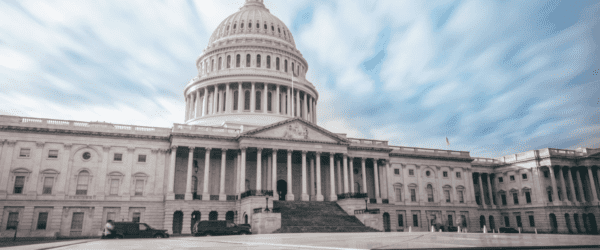
We need hardly tell you that government regulations have a tremendous impact on records management. Depending on your industry, federal regulations determine the volume of records, their retention and management, and the necessary reporting requirements. Staying in compliance is critical to the continued success of your organization.
But where do these regulations come from, anyway? And how do they make their way into the Code of Federal Regulations in the case of the United States?
What’s the Process for Enacting US Federal Regulations?
Regulations don’t just happen—they’re not a Monday morning policy memo thought up during Sunday’s round of golf. There are two ways of enacting federal regulations: by Congress or by government agency. A regulation, ideally, follows the bill-to-law process in the United States Congress, complete with committee debates, amendments, floor debates, voting and presidential signature. Depending on the political climate however, enacting regulations through Congress can be tortuous if not downright impossible.
Regulations can also be developed and enacted by government agencies with the needed expertise in the complex fields they oversee. These agencies fall under the executive branch but require congressional statutes for their creation. Some are independent of the United States Government, while others are directly under presidential control through the president’s Cabinet.
Whether enacted by Congress or by a government agency, it is the executive branch that has the duty of enforcing federal regulations. The judicial branch decides if they are legal and valid, and the legislative branch monitors how the regulations are applied.
Since 1946, when the Administrative Procedure Act (APA) was enacted, Congress has made it clear that regulations not voted through the legislative process must adhere to specific rule-making guidelines and be subject to judicial review. The regulation-making process is triggered by a multiplicity of factors according to the Federal Register: enacted laws, new technologies, new information, safety concerns, recommendations, petitions, lawsuits, presidential directives, letters from the Office of Management and Budget (OMB), requests from other agencies and recommendations from studies done by agency staff.
So How Long Does It Take?
The rule-making process, as you may imagine, is rather lengthy. You may remember the spate of large tank-car fires back in 2015. North Dakota required the evacuation of a whole town when six tank cars caught on fire. In West Virginia, 109 cars caught fire, and Illinois had a 21-tank car blaze. There was another tank-car fire in Ontario. It seemed oil-carrying tank cars were derailing and burning all over the place. In response, Congress passed the Fixing America’s Surface Transportation Act (FAST Act) in 2015, mandating tank-car regulations concerning recordkeeping and emergency response plans.
The Pipeline and Hazardous Safety Administration set to work. They opened up the regulation-making process by publishing an “Advance Notice of Proposed Rulemaking” (ANPRM) in the Federal Register. They developed a plan using valid statistics, information, agency analysis and industry input. This process was open for comments on the Federal Register website. Once the plan seemed sound and thorough, they made a formal proposal notification, a “Notice of Proposed Rulemaking” (NPRM). They published the plan for these new regulatory requirements in the biannual “Agenda of Regulatory and Deregulatory Actions,” as well as in the Federal Register. The proposed regulations were now open for more comments and input from stakeholders.
After a time period set and often modified by the agency, the final proposal was published in the Federal Register with all the supplementary information available. In February of 2019, the new regulation finally made its way into Title 49 of the Code of Federal Regulation (49 CFR 130.145), with an effective date of April 2019.
It took four years for the regulation to make it through the process. Some regulations are faster and some are slower, but all of them must follow this procedure—even the ones everyone agrees are necessary. And don’t forget that that deregulation must also follow the same procedures.
The biannual publication from the Federal Register, “Agenda of Regulatory and Deregulatory Actions” provides a good list of what might happen in the regulatory future.
How Can You Possibly Keep Up with All This?
Although change is relatively slow, the need to comply is not. A regulatory change can affect the simplest of business decisions. An accurate, up-to-date records and information management (RIM) program is an indispensable tool to keep you abreast of changes in the regulatory environment.
For more information, check out our ebook, “6 Keys to an Effective Records Management Program.“




